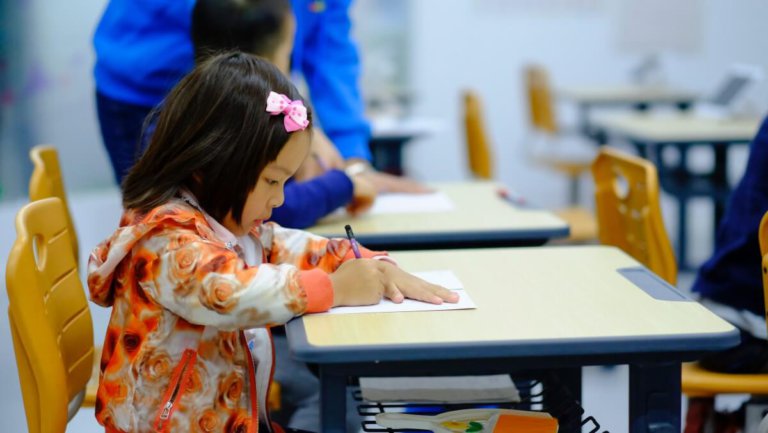
In opposition to goal-setting strategies, intention-setting takes a softer classroom approach.
By encouraging their students to set personal intentions, teachers take off the pressure that goals may grant and replace them with a powerful mindfulness practice.
For instance, a student’s goal would be to complete three pieces of homework with their caregiver by the end of the week.
Yet, their intention would be to heighten their teamwork skills by sharing ideas from their homework with their caregiver.
Instead of setting a strict or pressured goal, an intention implies a mindful practice, challenging the reasoning behind targets.

Would school students enjoy intention-setting rather than goal-setting? Source: Yogendra Singh/ Unsplash
Reflecting on personal progression
One core product of intention-setting in the classroom is the art of reflection.
Rather than focusing on all the boxes they’ve ticked or the awards they’ve collected throughout the school year, students can ask themselves what they learned from ticking those boxes and why they received those awards.
By questioning the intent behind each of those personal developments, they’ll set their positive energy in motion and become conscious about the purpose behind their learning habits.
Once familiar with the intention-setting strategy, their self-reflection will deepen and students will seek to improve specific parts of their daily practice.
For instance, one student may notice how they’ve rushed to complete a few of their goals but didn’t take time to improve the quality of their results.
Therefore, an intention would be to improve their patience by spending longer on classroom tasks.
Treating intentions as insightful signals
If a student loses sight of why they are working towards a goal, an intention would be there to steer them back on track.
An insightful method for both teachers and students, intentions connect emotion to educational tasks, inspiring them to carry on.
Even when a teacher fears that a weekly goal isn’t going to be reached, for instance, students haven’t met their reading targets or the class couldn’t complete the desired amount of teamwork sessions as the teacher may have hoped, the intention will always remain.
Acting as a passage around strict KPIs, intention-setting enables learners to question to why they must perform weekly reading activities or why they must engage with their peers during teamwork sessions, and if they’re building their confidence and independent-thinking skills, then it was a successful week despite not hitting the numbers.
Intention-setting is a popular tool for adults—what does it look like in a middle school classroom?https://t.co/YPxkRC94oQ
— edutopia (@edutopia) November 15, 2019
Igniting feedback through intentions
Once a student outlines their annual intentions, teachers are there to ensure that they fulfill them.
If a handful of students intend to become more creative throughout the year, then their teacher can integrate more arts and crafts sessions or include discovery-led lessons.
With the intention-setting data that they’ve pulled from their students’ feedback, teachers can start to connect common interests and aspirations within their classroom community and switch up the lesson styles.
These intentions would also be useful during Parent’s evenings, where students can discuss with their caregiver and their teacher if they feel they’ve met their intentions, alongside their goals; or how these two core practices interconnect and influence each other.
By altering their intentions, they may also alter their goals.
Therefore, it’s important that teachers ensure that intention-setting and goal-setting strategies walk side-by-side in the classroom; if they choose to integrate this impactful technique.
Setting goals helps us grow. @emnish89 challenged us to set 1 long-term goal and 3 short-term goals to help us get there. @ClassroomChamps #classroomchampions #NishChamps @Surrey_Schools pic.twitter.com/6zda1vrOaJ
— Susan Nazem (@Ms_Nazem) November 14, 2019
Liked this? Then you’ll love…
How did schools celebrate World Kindness Day?
English Language classes must instil more global skills in students







